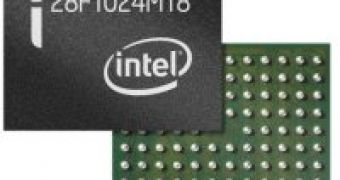As embedded systems are gaining more and more popularity, a certain degree of performance increase is expected from them. As the main quality of this systems over desktop and mobile computer solution is their lower overall costs and low power consumption, there are only a few things that can be done in order to increase their global performance. One of these things is to create a better memory standard, better both in terms of speed and storage capacity.
In an attempt to address these issues, Intel now announced that it will expand its NOR flash memory chips that are intended for use in embedded systems to use the 65nm fabrication process which allows for greater performance and storage capacities without increasing the manufacturing costs and thus creating pressure on the market. NOR flash memories are currently found in all kinds of embedded systems devices like TV sets, modems, household appliances and so on.
Intel's NOR based memory chips include both serial and parallel designs, like their StrataFlash embedded memory solution that is composed of only a single chip, allowing for a cheap product allowing for high storage density and high-performance. For older embedded system designs, Intel offers its Serial flash memory that comes with an interface equipped with fewer pins that has the advantage of allowing a clear upgrade path. Just as the whole embedded systems market went on a very steep ascending trend, Intel managed to keep losing money through the second quarter of 2007 and thus it decided to revamp its NOR memory offerings.
Just like NAND based flash memory, NOR based memory chips are representing a kind of a non-volatile permanent memory storage product, that can be read just like the random access memory, RAM for short, that is found in computers. Unlike NAND chips, NOR based memories are slower when it comes to read and write speeds, but it is still the preferred standard when it comes to designing and constructing embedded systems, because of its RAM-like access properties.

 14 DAY TRIAL //
14 DAY TRIAL //